Wildlife - Humpback Whale
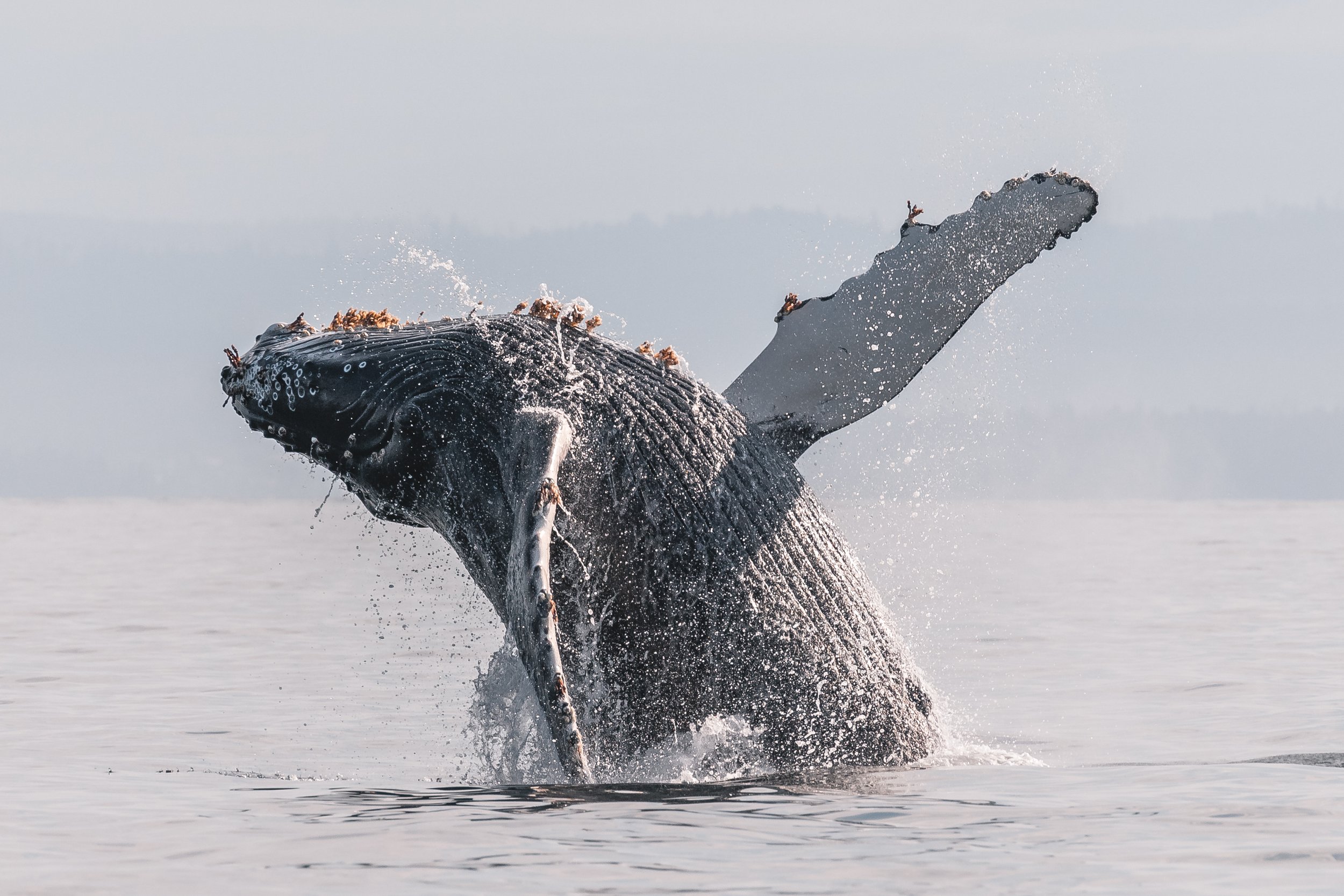
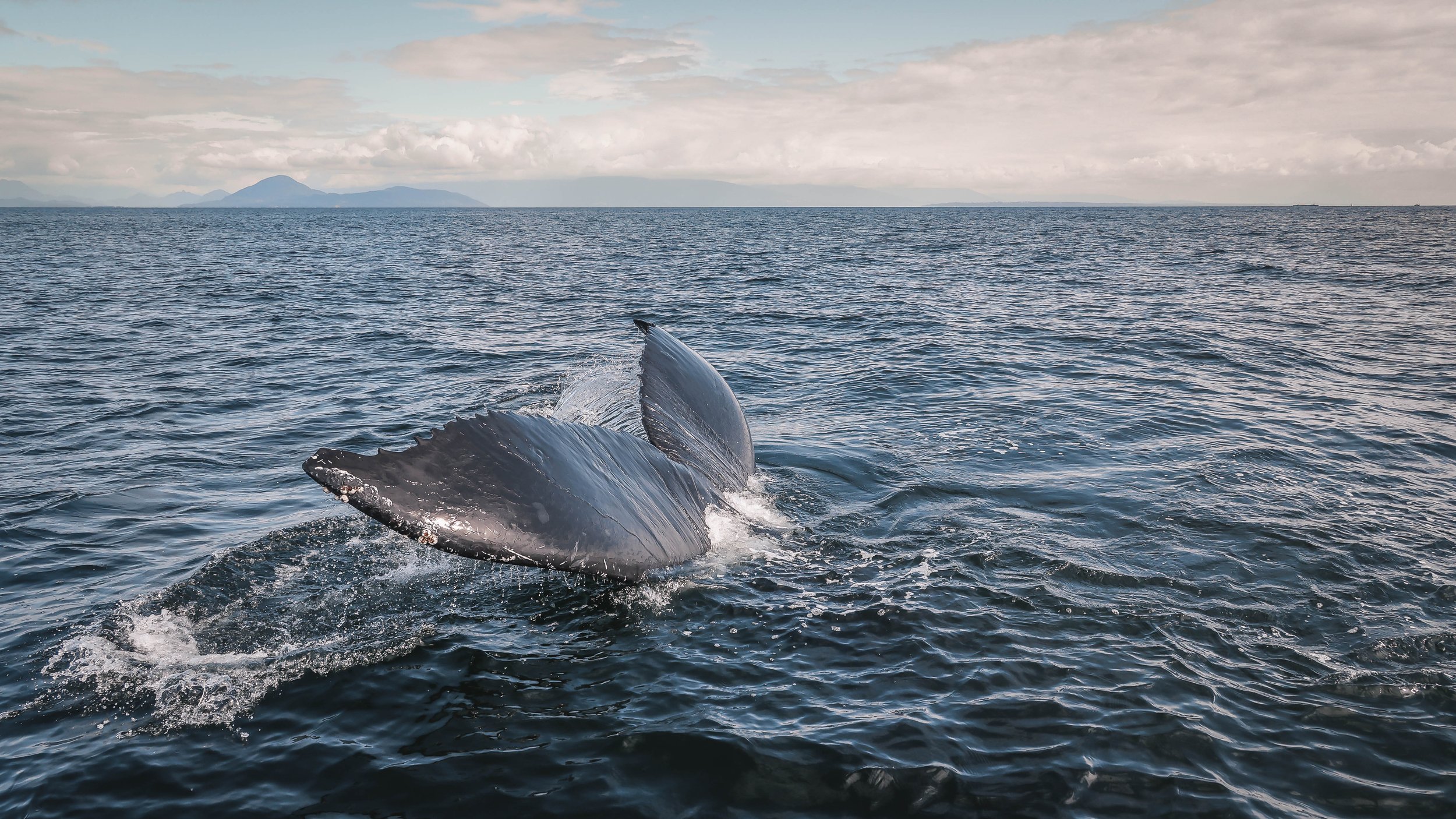

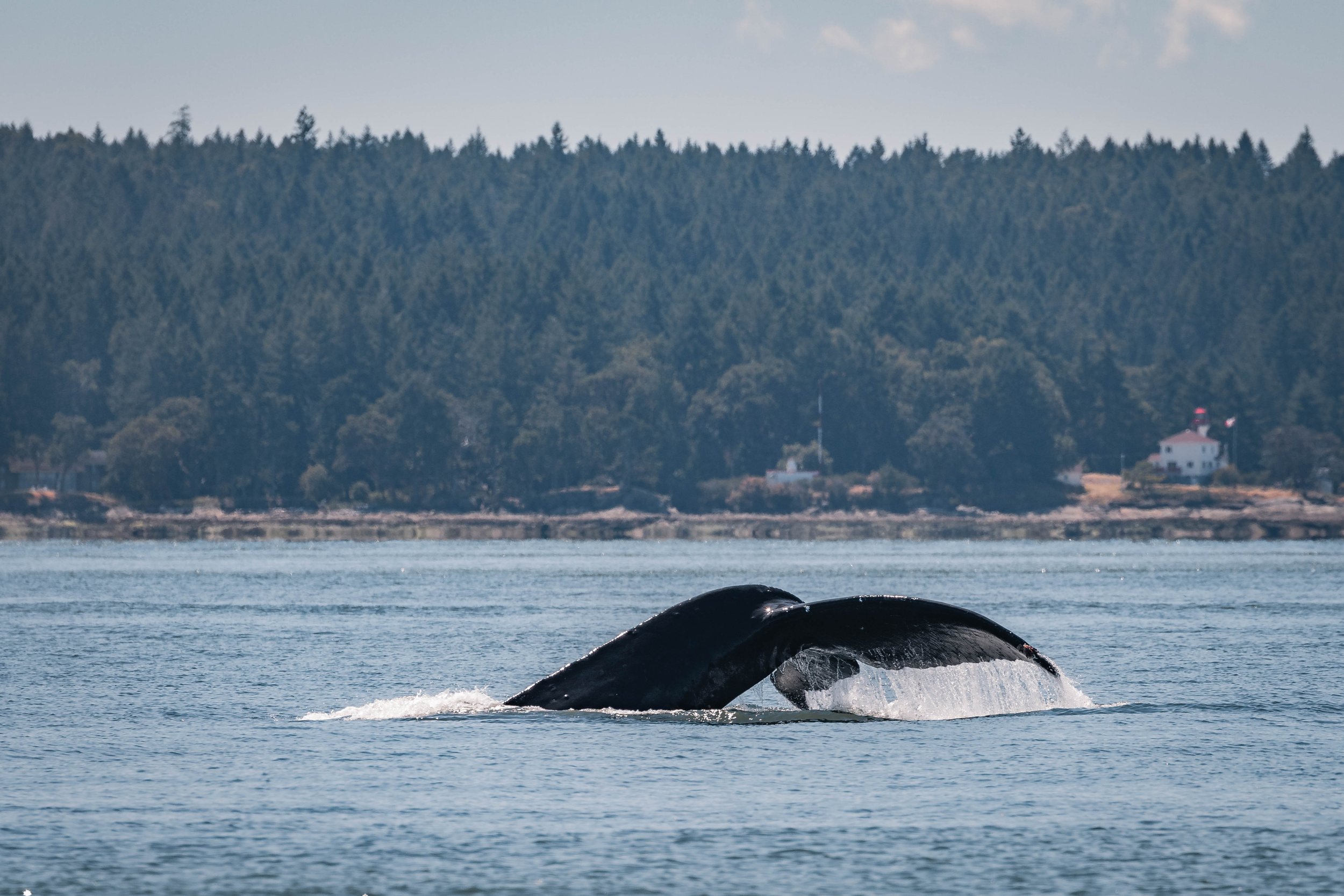
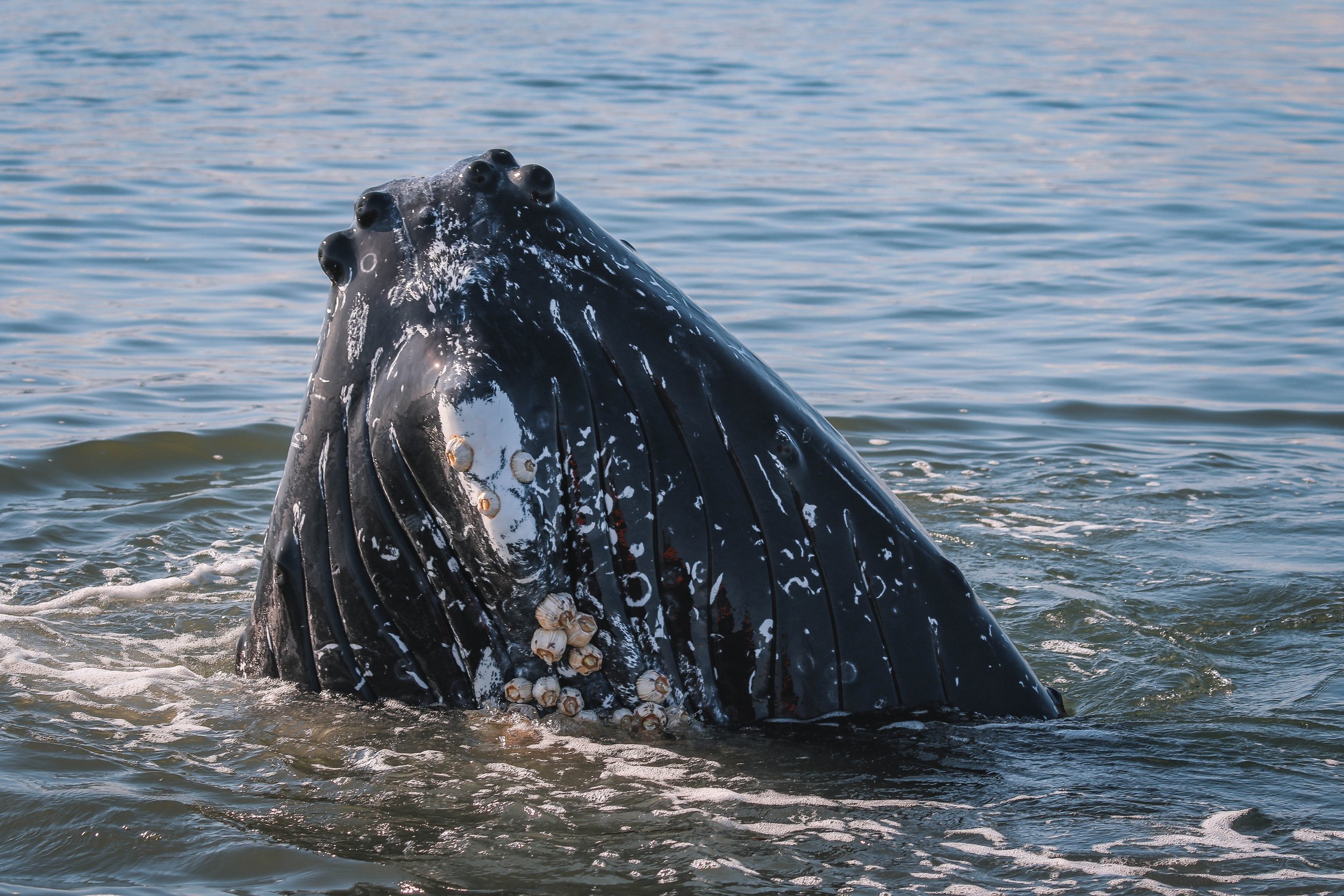

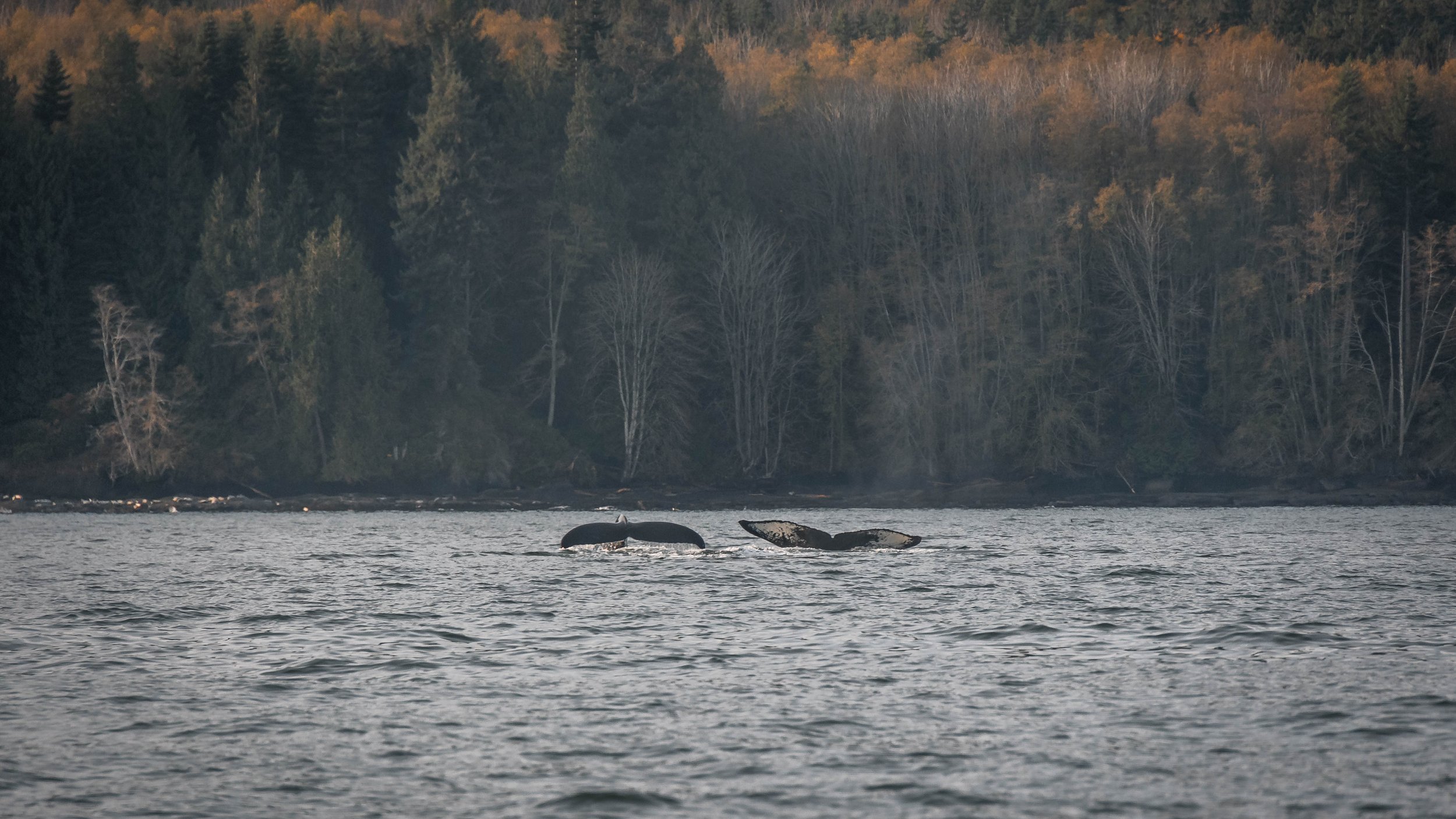
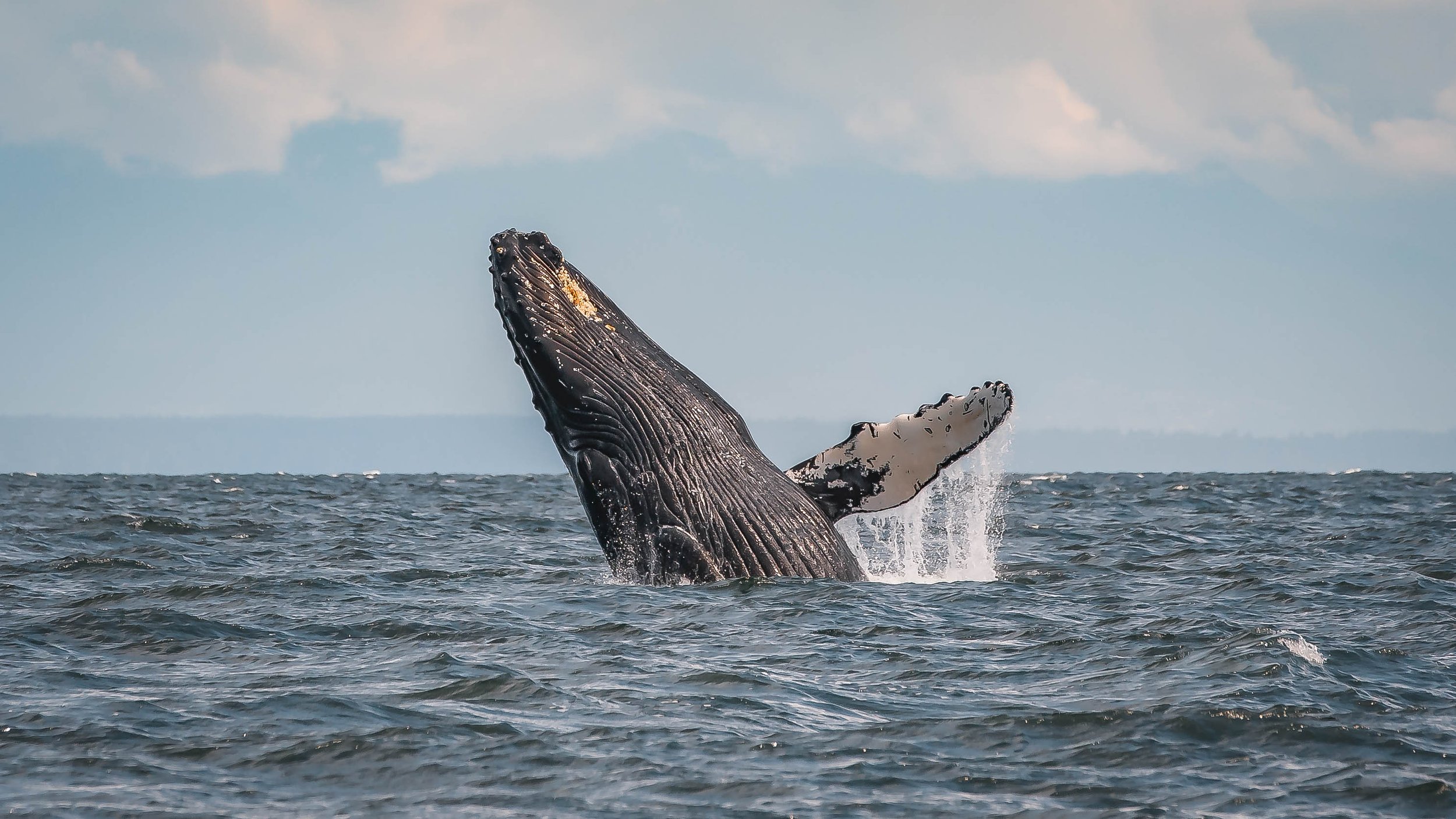
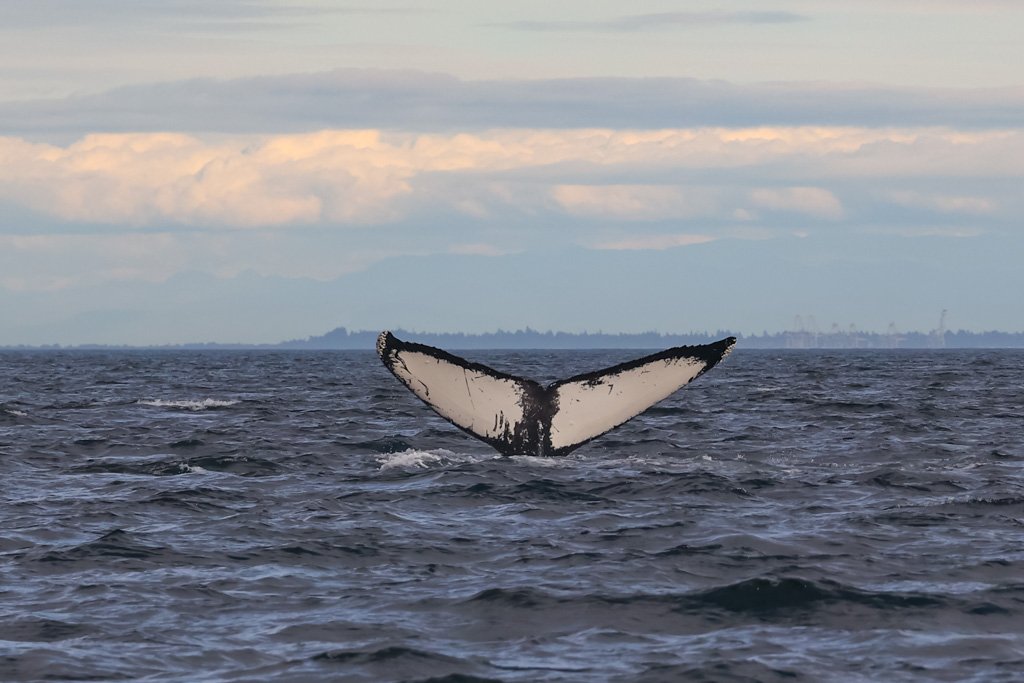
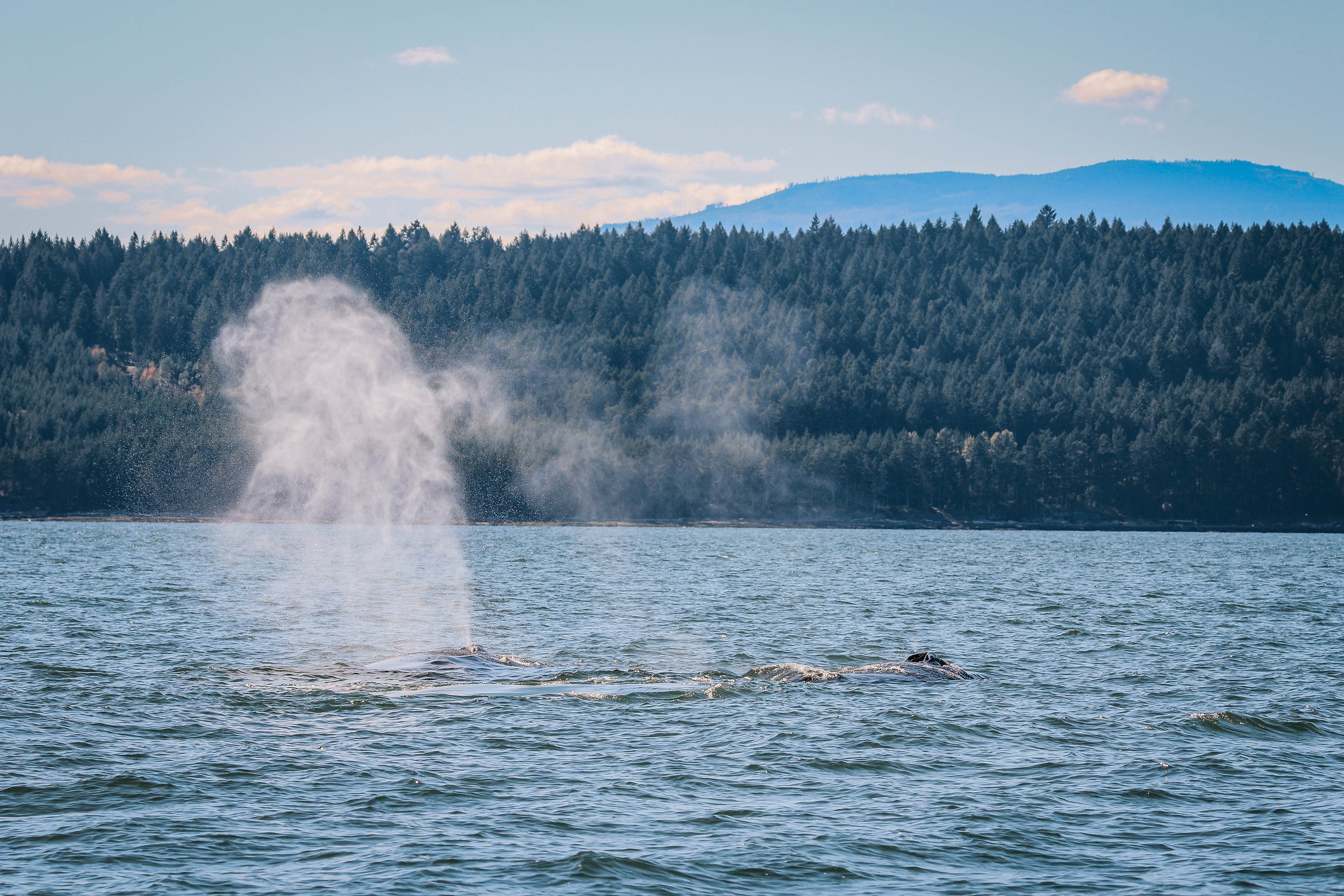
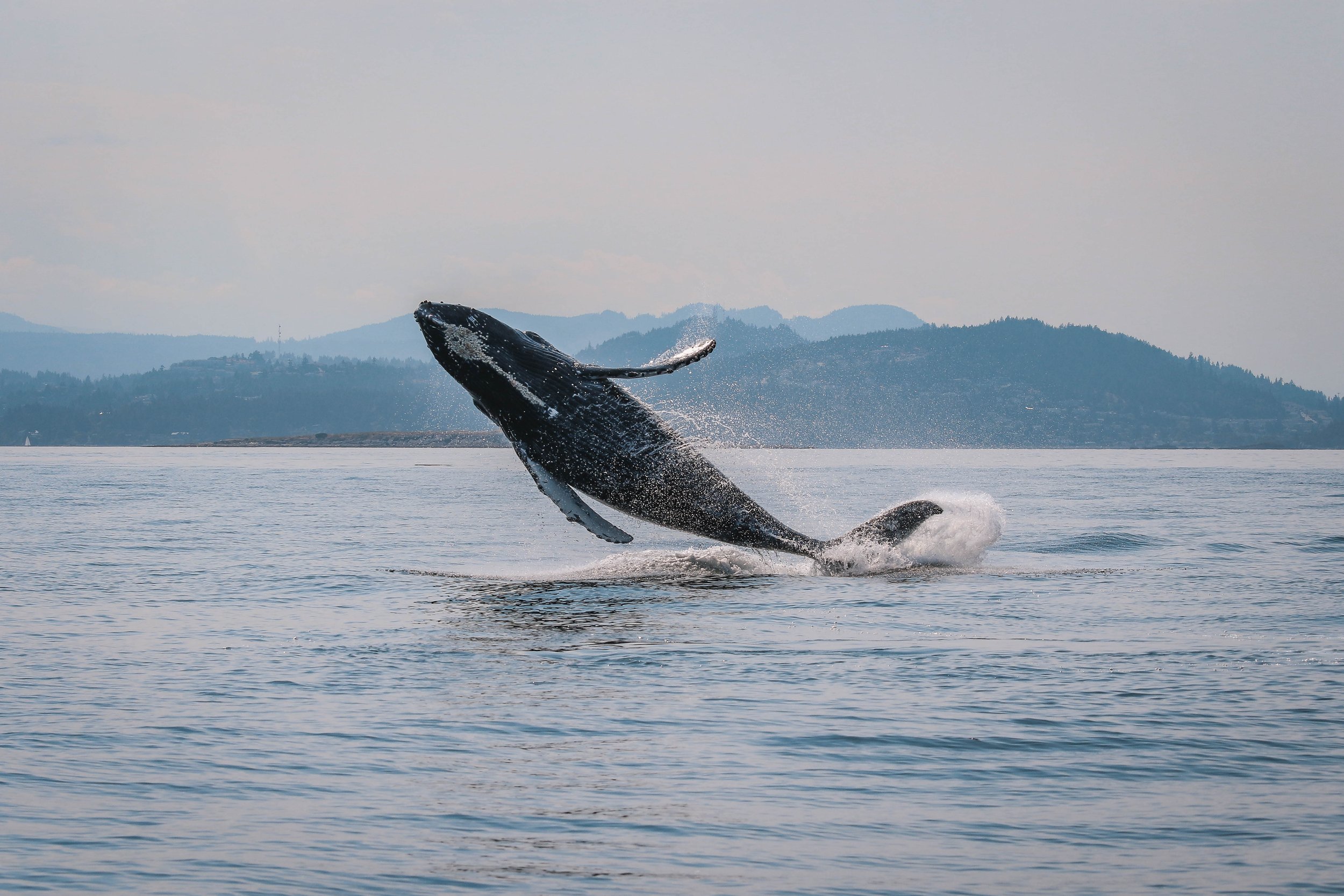
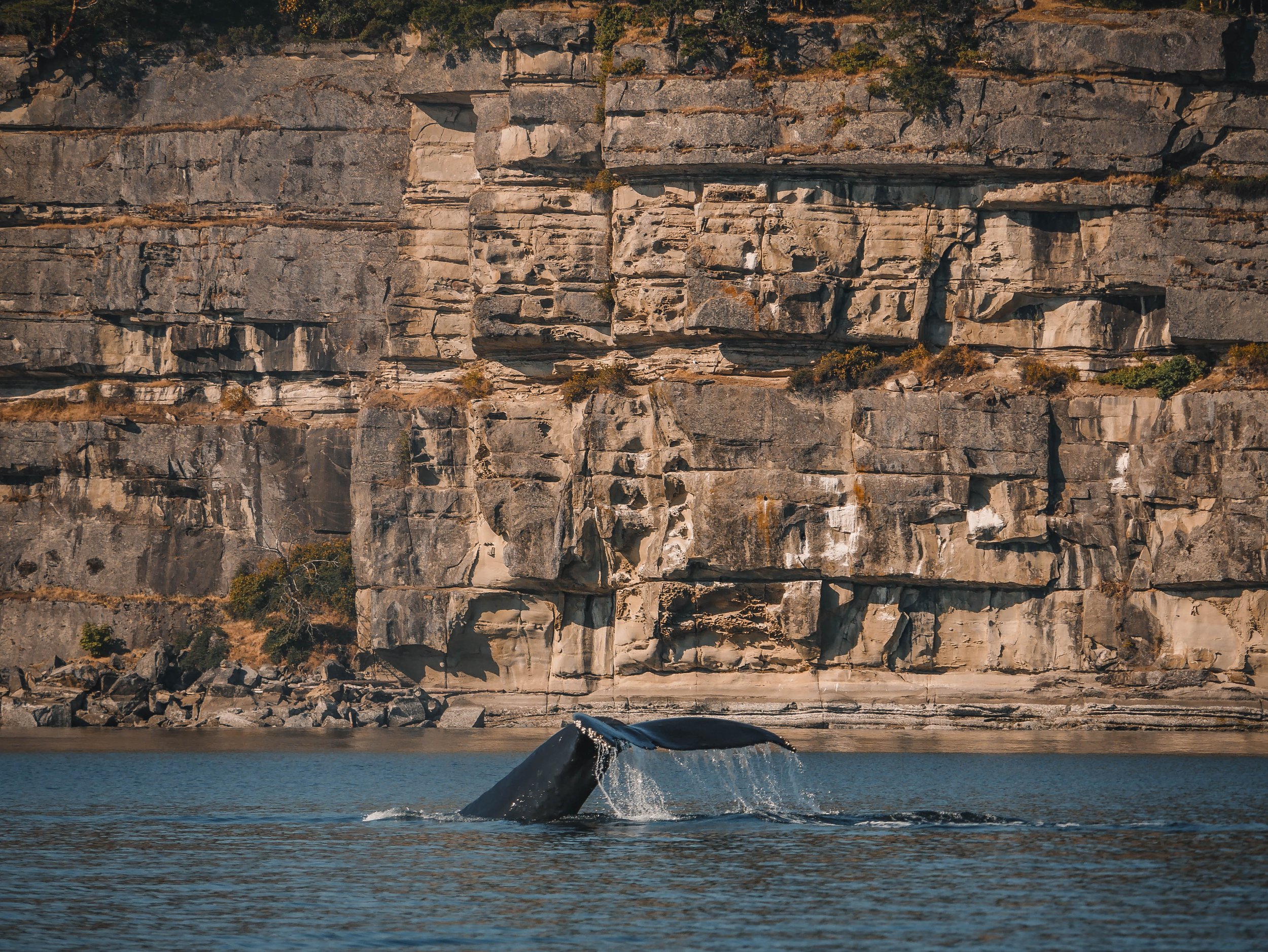
Humpback Whale - Megaptera novaeangliae
Humpback whales are migratory, and a growing population of these ocean giants spend their entire summer feeding in BC waters. Humpbacks that spend their summer in BC typically begin their migration South in the early fall. They spend their winters breeding in Mexico and Hawaii and return to the BC coast in the springtime.
As humpbacks continue to return to BC’s coast in the spring and summer months, it’s important to determine their role in the marine food web and find out how they are using the Salish Sea habitat. This information can help us to better understand and protect them.
Our relationship with Humpback whales
Humpbacks were heavily targeted during the Whaling Era, pushing their species to the brink of extinction. In the Salish Sea, there was a roughly 50-year period where it was nearly impossible to spot one of these gentle giants. The Canadian government banned all whaling operations from their ports in 1972 - since then, many of our whale species (including humpbacks) have had an increase in their populations. It is now common to spot humpbacks up and down the coastline of Vancouver Island and British Columbia. A 2006 census estimated the North Pacific humpback population at 18,000 strong - their numbers continue to grow yearly.
Specialized hunters
Although humpback whales are one of the largest predators on the planet, they have no teeth! Instead, they have baleen plates made of keratin that act like a giant sieve to filter food, including krill, herring, pilchard and possibly even anchovies. This makes humpback whales part of the taxonomic group mysticetes, which is a branch on the evolutionary tree representing the baleen whales. Humpbacks can use their baleen plates to feed in a variety of ways. However, most humpbacks in BC prefer to lunge feed which involves rushing upward from the depths to nab a mouthful of food at the sea surface. Lunge feeding attracts a lot of attention, not only from whale watchers but other coastal wildlife too. Sea lions, seals, gulls, murres, cormorants, and other marine wildlife are often seen scavenging the leftovers from humpback whale meals.
Identifying different individuals
Humpback whales in British Columbia are classified as “BCX”, “BCY”, or “BCZ” depending on the amount of white on the underside of their fluke. For example, Big Mama’s fluke (shown below) is a mix of white and black, making her a BCY whale. This is how we know which humpback whale is which – by the fluke patterns and shape. Interestingly, most humpback whales in BC are BCX whales (their flukes are mostly black).
How we can help our Humpback whales
The humpback's biggest threats in BC are vessel strikes and entanglement in fishing gear. Sadly, dozens of Pacific humpback whales are lost each year as a result of entanglements and vessel strikes.
Are you passionate about whales and enjoy watching them from shore? Please consider downloading the Whale Report app to help protect our whales!



